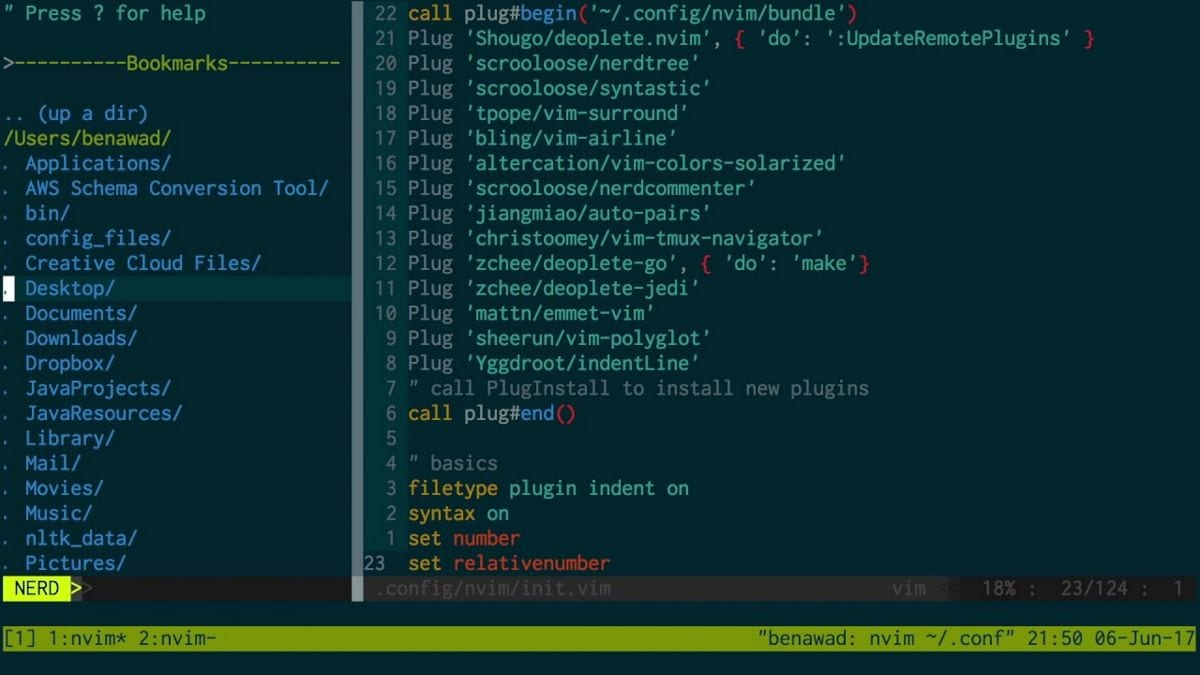
After almost two years of development the release of the new version of Neovim 0.5 has been announced (a branch of the Vim editor, which focused on improving scalability and flexibility), this version represents about 4000 confirmations since v0.4.4.
It is mentioned that in this new version of Neovim 0.5, the highlights include support for LSP, new APIs for extended brands (with byte resolution change tracking) and buffer decorations, as well as great improvements to lua as a plugin and configuration.
For those who do not know about Neovim should know that Under the project, the Vim codebase has been revised for more than seven years, as a result of which changes have been made to simplify code maintenance, provide a means of division of labor between various maintainers, separating the interface from the base part (the interface can be changed without touching the internals) and implementing a new extensible plugin-based architecture.
Among the Vim issues that led to the creation of Neovim is the monolithic codebase of over 300.000 lines of C code. Only a few people understand all the nuances of the Vim codebase, and all changes are controlled by a maintainer. , making it difficult to maintain and improve the editor. Instead of the code embedded in the Vim core to support the GUI, Neovim proposes to use a universal layer that allows you to create interfaces using various toolkits.
Main news of Neovim 0.5
This new version presents a lot of changes of which most of these changes are focused on the improvements to Lua, the new APIs and improvements in the configuration and is that se highlights the extended support for Lua as a language for plugin development and configuration management.
Of all the changes that stand out the most, we can find that LSP client has been added (Language Server Protocol) built into Lua, which can be used to connect to external services for code completion and analysis.
Of the APIs, one stands out that was added to control the design of buffers selection, as well as an API to use extended tags to track changes at the individual byte level.
As well experimental tree-sitter support offered as a syntax engine, including one based on the new core APIs for byte tracking and decorations.
Finally en regarding the corrections:
- Fixed pasting of blocks not working properly
- Fixed the mute behavior of nvim_exec ()
- Fixed many bugs discovered by clang and coverity
- Troubleshooting terminfo problems in Windows
- Solution with fit and pleat screen
- Troubleshoot display terminal family
Finally if you are interested in knowing more about it of this new version, you can check the changes in the following link.
How to install NeoVim on Linux?
Now for the installation case of this new version in Linux, andIt is important to emphasize that Neovim is within the majority from the repositories of the most popular distributions.
Though the only problem at the moment is that the new version has not been updated yet in the repositories of most Linux distributions.
As currently only Arch Linxu and its derivatives they already have the availability of this package.
To install on Arch and derivatives, they only have to open a terminal and in it they will type the following command:
sudo pacman -S neovim
While for those who are users of Debian, Ubuntu and derivatives can install the new package as soon as it is available executing in the terminal the command:
sudo apt install neovim
In the case of those who are users of Fedora and derivatives:
sudo dnf install neovim
OpenSUSE users:
sudo zypper install neovim
Finally for Gentoo users
emerge -a app-editors/neovim